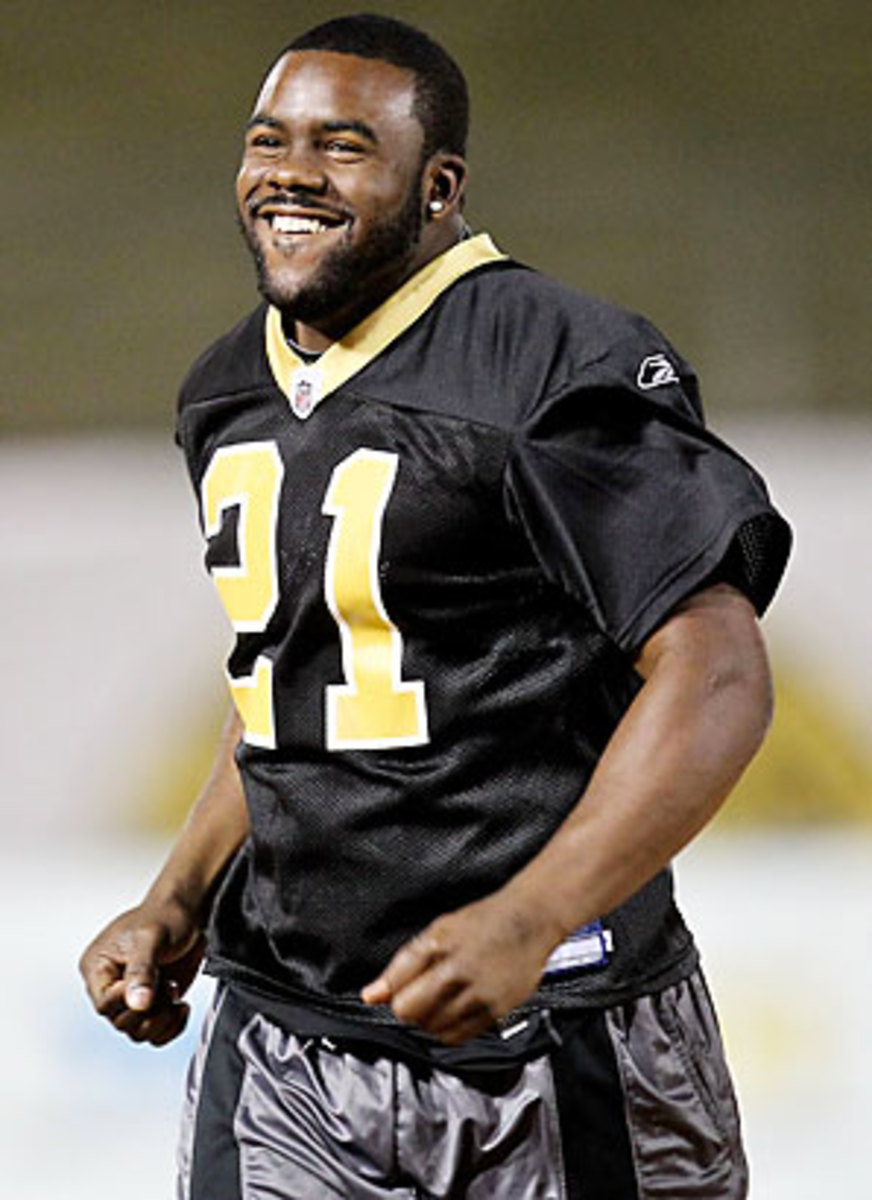NFL Rookie Watch: Mark Ingram


Entering the 2011 NFL Draft, many compared the University of Alabama's Mark Ingram to Hall of Fame running back Emmitt Smith for his toughness and compact running style. Like Smith, Ingram fell to the bottom half of Round 1, landing at No. 28 to New Orleans. The Saints gave New England their second round choice and next year's first to acquire the pick -- a sign New Orleans was anxious to land the 2009 Heisman Trophy winner.
The 5-foot-9, 215-pound back ripped up the SEC the past two seasons and seemed a lock to be the first running back selected, even after posting disappointing numbers at the combine in February (4.62 seconds in the 40-yard dash and the lowest 20-yard shuttle score among all back prospects).
In recent weeks Ingram has been working out with his new teammates. He's made at least one believer so far: "He looks great. There's no doubt he's been working and he's in shape," Drew Brees told a reporter. "He can play a pretty significant role on our offense."
Dissecting the depth chart: The Saints could enter camp with a backfield consisting of Pierre Thomas, Reggie Bush, Chris Ivory, Lynell Hamilton and Ingram -- all of them 26 years old or younger. Thomas is at full strength following offseason ankle surgery, but some have speculated the team might unload him and his $11.2 million contract to make room for Ingram. Bush conceded his days might be done in New Orleans when the team picked Ingram, then backtracked a few days later. Although he has never been the feature back the team hoped he'd become, Bush is a good fit for the Saints offense due to the matchup problems he creates on passing downs. In 2010, Ivory led New Orleans in rushing (5.2 yards per carry); like Ingram, he's considered a power back. Hamilton brings the least to the table, but depending on how things shake out with Thomas the restricted free agent could return to the mix. Ingram may be the most complete back of the five, but he lacks experience and will not become a 20-carry back in New Orleans even if he separates himself from the competition in camp.
Just the stats: During his Heisman-winning '09 season, Ingram gained 100 or more yards rushing in six of nine SEC contests, including a 246-yard effort against South Carolina. In the national championship win over Texas, Ingram gained 116 yards on 22 carries. After missing the first two games of the '10 season due to minor knee surgery, Ingram exploded against Duke with 151 yards on just nine carries. He averaged 5.5 yards per carry in '10, but failed to reach the 100-yard rushing mark in his final nine collegiate contests. As a freshman in '08, Ingram was able to pick up a few table scraps left behind from Crimson Tide starter Glen Coffee. He scored six times in the final five games of the regular season and led the team in rushing touchdowns with 12. In three seasons Ingram found the end zone 46 times.
Projection for 2011: 120 carries, 575 rushing yards, 20 catches, 125 receiving yards, 8 TDs.
2010 rookie comparison: Jahvid Best
Most thought Best would become an instant star in Detroit's growing offense, but his development has been slow. A turf toe injury limited his production last season, and after scoring five touchdowns in the first two weeks he scored just one the rest of the way.
Interesting fact that won't help you: Before Ingram, the last college back to win both the Heisman and national title in the same season was the University of Pittsburgh's Tony Dorsett in 1976.
What he's worth: Fantasy speculators are already looking to Ingram to be this year's big-time rookie fantasy back. The Saints are an explosive offense in need of a more stable rushing attack. But Ingram will be forced to share too much of the workload, and while he's probably the team's best goal-line option, his touchdown total won't make up for his minimal contribution between the 20s.
Ingram makes sense as a No. 3 back in traditional leagues; those expecting more are expecting too much.
Mike Beacom is a contributing writer for FootballDiehards.com.
